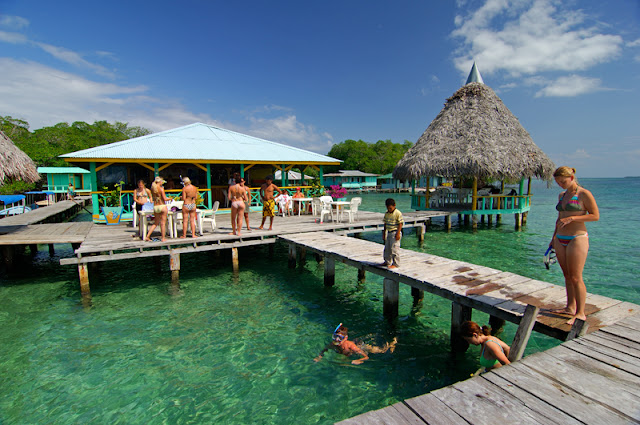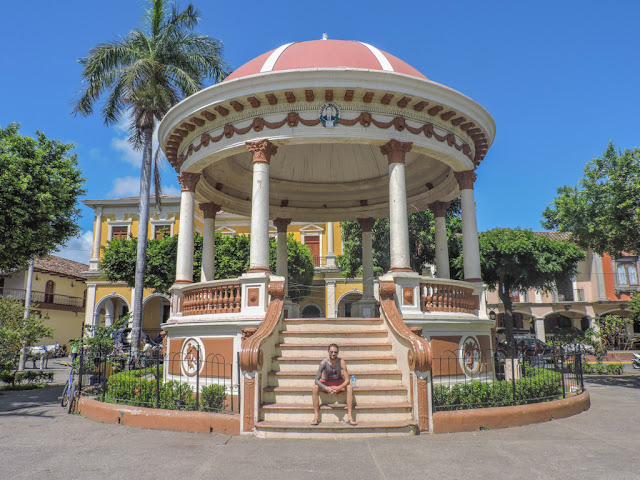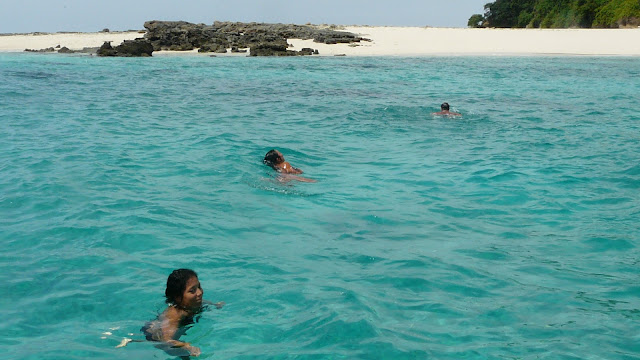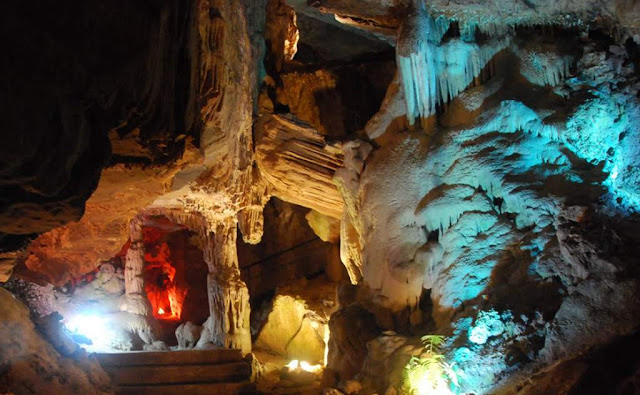BRIDGE OF THE CONTINENT
Honduras

viernes, 19 de agosto de 2016
jueves, 18 de agosto de 2016
Is Nicaragua the next "Costa Rica"?
"With its great mix of tropical rainforests, vibrant culture, colonial history, heavenly beaches and amazing, affordable properties, Nicaragua is working its way up the hot list,” says Brandi Merchant Kensington’s Senior Central American Expert.
“Currently more like the Costa Rica of 20 years ago, Survivor Nicaragua is putting the country in the spotlight and driving a spike in enquires.”
Adventurers can enjoy exotic wildlife safaris, horseback riding, volcano hikes kayaking through mangroves, surfing, fishing, zip-lining, exploring cloud forests, relaxing in hot springs, scuba diving, touring colonial towns and even tree planting! Nicaragua, the "Land of Lakes and Volcanoes", is located in the heart of Central America–an ideal place to visit if you are looking for something truly different and defying.
Nicaragua is neatly tucked between two oceans, where you can enjoy the natural beauty of dozens of volcanoes, rivers, and lakes.
“Currently more like the Costa Rica of 20 years ago, Survivor Nicaragua is putting the country in the spotlight and driving a spike in enquires.”
Adventurers can enjoy exotic wildlife safaris, horseback riding, volcano hikes kayaking through mangroves, surfing, fishing, zip-lining, exploring cloud forests, relaxing in hot springs, scuba diving, touring colonial towns and even tree planting! Nicaragua, the "Land of Lakes and Volcanoes", is located in the heart of Central America–an ideal place to visit if you are looking for something truly different and defying.
Nicaragua is neatly tucked between two oceans, where you can enjoy the natural beauty of dozens of volcanoes, rivers, and lakes.

Business in Nicaragua is trickling in. Kaye says he gets three or four bookings a month, whereas he can get as many as 800 in Costa Rica. MacKenzie was able to visit villages tourism hadn’t reached, unmarred trails, and islands where he was the sole American visitor. “It was like stepping back in time,” he says. This sense of virgin territory will, of course, be radically altered if and when the country becomes a favored destination. Kaye himself never intended to exploit the Costa Rican–ecotourism economy, and he’s ambivalent about Nicaragua using it as a model. He’s happy to be starting slowly with his efforts.
But just as entrepreneurs followed his lead in Costa Rica, many companies are now expanding their ecotourism empires to Nicaragua, too. Lindblad Expeditions will guide you through hikes, kayak trips, and snorkeling expeditions. Then there’s Gray Line’s “Granada Natural” expedition, which takes you to Apoyo Lagoon, just outside Granada. Dozens of outfitters offer scuba and snorkeling, surfing, canopy tours, and hiking, and there is a wealth of eco-resorts in which to stay.
Perhaps the best known—and a prime example of how the future of Nicaraguan eco-tourism could potentially shape up—is Morgan’s Rock, a hacienda and eco-lodge in Playa Ocotal, the southern section of Nicaragua, 45 minutes from the Costa Rican border. On 4,400 acres, a French family by the name of Ponçon and a British architect named Matthew Falkiner have launched a concerted conservation effort while still promoting the local economy, setting aside 800 acres of primary growth forest and planting 800,000 native hardwood and fruit trees for farming and use in local crafts.
“We wanted to promote nature as it is,” says Falkiner. “We don’t have to pretty it all up. We didn’t want to do anything that imposed very heavily on the area.” And, of course, they don’t have to pretty it up; the place is majestically beautiful, with tree-house–like cabins perched on a cliff, peering out over the water.
In some respects, Nicaragua is quite lucky to have only recently discovered its environmental attributes, in the middle of an eco-marketing craze when people are eager to find the next big green thing. But those who wish to take in its offerings might have to jump on the bandwagon before there is one. “Now’s the time to go, while it still hasn’t been overdeveloped,” says Kaye. “[Nicaragua will] never be the next Costa Rica—it’ll be its own thing.”
http://www.mnn.com/lifestyle/eco-tourism/stories/nicaragua-the-next-costa-rica
http://www.kensingtontours.com/compass-blog/nicaragua--the-next-costa-rica/2011/05
See what your life could look like in San Juan del Sur, Nicaragua
Picture this: you wake up in the morning and walk out to your balcony to feel the gentle breeze from Lake Nicaragua and listen to the tropical birds. The sun is shining, so you put on your swimsuit, grab your surfboard and head to the nearby beach.
You follow it up with a dip in the pool and order a fruity cocktail with a plate of plantains and fried cheese (tostones con queso) plus a side of fresh salsa. After soaking up the sun by the pool, you return to your villa to read a magazine in the rocking chair on your private porch overlooking the bay. Your friends pop round in time to watch the sun slowly dip into the ocean.
It doesn’t have to be a dream. Take a peak at what your life could look like:
Right now, 2 bedroom ocean view villas are available at Villas de Palermo starting at $110,000. That’s a lot of house for your money. Take a look.
In a recent article by Dwell, Award-winning landscape architect Margie Ruddick explains landscape architecture as the discipline in which, “the sometimes murky but exquisitely beautiful world of ecologists intersects with design“.
For nature enthusiasts who want to be as close as as they can get to the wild outdoors without compromising comforts, the villas at Palermo Hotel & Resort are the best of both worlds.
http://sanjuandelsur.org/see-what-your-life-could-look-like-in-san-juan-del-sur/
You follow it up with a dip in the pool and order a fruity cocktail with a plate of plantains and fried cheese (tostones con queso) plus a side of fresh salsa. After soaking up the sun by the pool, you return to your villa to read a magazine in the rocking chair on your private porch overlooking the bay. Your friends pop round in time to watch the sun slowly dip into the ocean.
It doesn’t have to be a dream. Take a peak at what your life could look like:
In a recent article by Dwell, Award-winning landscape architect Margie Ruddick explains landscape architecture as the discipline in which, “the sometimes murky but exquisitely beautiful world of ecologists intersects with design“.
For nature enthusiasts who want to be as close as as they can get to the wild outdoors without compromising comforts, the villas at Palermo Hotel & Resort are the best of both worlds.
http://sanjuandelsur.org/see-what-your-life-could-look-like-in-san-juan-del-sur/
lunes, 13 de junio de 2016
THE BEST BEACHES IN PANAMA
In spite of the hundreds of kilometers of coastline on both the Caribbean Sea and Pacific Ocean, Panama's beaches are less than noteworthy. The coastal area surrounding Panama City is mud flats; farther west the sand is dark and the water dirty-green until you reach the pretty beaches at Santa Clara and Farallón. The Azuero Peninsula and parts of the Caribbean coast are, sadly, receptacles for trash carried by currents from South America and beyond.
There are a few exceptions, but to find glorious tropical beaches, you'll need to visit Panama's islands. There are more than 1,000 on the Pacific Side and a little more than half that number on the Caribbean, so you have a lot to choose from. A word of caution: Panama is renowned for its riptides. No matter how refreshing the water looks, analyze conditions, stay out of choppy water, or head to a beach known for calm water.
Isla Bastimentos National Park, Bocas del Toro
Cayos Zapatillas, or the "Slippers Islands" (so-called because they resemble footprints), not only fulfill the beach lover's fantasy with their soft sand backed by a tangle of jungle; they are also surrounded by a rich display of coral that attracts hordes of fish, providing good snorkeling. The park's main island, Isla Bastimentos, offers terrific beaches with clean sand and blue water, such as Red Frog Beach, Wizard Beach, and Playa Larga, which can be reached by a short walk or hike, or by boat during the calm-water season from August through October.

Isla Coiba National Park
Beyond ranking as Panama's number-one diving site, Isla Coiba National Park boasts fine beaches backed by dense jungle. Tiny islands such as Granito de Oro are so idyllic that midsize cruise ships make a stop here (which could spoil your day if you're here independently). Even the beach fronting the park station seems too perfect to be true.
Las Perlas Archipelago
Despite this Pacific archipelago's proximity to Panama City, its top-notch snorkeling, white-sand beaches, and calm-water swimming conditions, the Pearl Islands are a relatively unsung beach destination. Outside of holidays and the hard-core summer, you won't find crowds here, even during weekends. It's also drier here during the rainy season. Isla Contadora offers lodging and day trips for fabulous snorkeling and visits to uninhabited beaches, and there is a luxury lodge, Hacienda San José, on Isla San José.
Comarca Kuna Yala
This is the premier beach destination in Panama, with over 350 islands scattered off the Caribbean coast that offer picture-postcard beaches with powdery white sand, coral reef, piercing turquoise water, and clusters of swaying palm trees. The colorful Kuna indigenous population administers this province, and their fascinating culture is part of the reason to visit the region, too. The glitch is that scuba diving is prohibited, and lodging is mostly Robinson Crusoe rustic, but all you'll want to do here anyway is swim, sun, and swing in a hammock.
Las Lajas, Chiriquí Province
It's not the most beautiful beach in Panama, but the water is the perfect temperature and produces just the right amount of waves for bodysurfing -- though there's little current. All of which means that Las Lajas is ideal for swimming, and since the beach measures more than 13km (8 miles) in length, you can walk forever. Rustic shacks and cheap restaurants are clustered on the beach at the end of the road, but it's best to bring your own snacks. If you're looking for a beach closer to David (and Boquete), try La Barqueta. Strong currents at this black-sand beach mean the water is not ideal for swimming, but it is lengthy like Las Lajas and good for walking, and there is a nature reserve here, too.
Santa Clara & Farallón, Pacific Coast
These two are the most appealing beaches along the Pacific Coast, and the best for swimming. Best of all, they lie within a 2-hour drive of Panama City. The beaches' water is bluer and the sand cleaner and whiter than its neighbors closer to the city. The Decameron Resort produces throngs of beachgoers at Farallón, but for the most part this long stretch of sand sees few crowds outside of weekends. Be warned however, that swimming conditions can be treacherous due to large waves and strong riptides. Self-catering cabins, midrange bungalows, and seafood restaurants are abundant.
http://www.frommers.com/destinations/panama/763776#ixzz4BVTpVR1i
Cuevas de Taulabé en Honduras te invitan a vivir una maravillosa aventura
Es uno de los sistemas de cuevas más accesibles en el país, ubicado en el kilómetro 140 de la carretera que une San Pedro Sula con Tegucigalpa. A pesar de haber sido descubiertas desde 1969, hasta años recientes realmente se han acondicionado para recibir visitantes de forma segura.
TARIFAS
Adultos L. 30.00
Estudiantes L. 25.00
Niños L. 10.00
Extranjeros $ 4.00
Son figuras caprichosas que lucen impresionantes y guardan los misterios de la belleza natural que las ha formado durante miles de años.
Taulabé se enorgullece de sus Cuevas que han hecho famoso a este punto ubicado en el departamento de Comayagua en el kilómetro 140.
La caverna cuenta con 300 metros de vereda, donde el visitante puede admirar el moderno sistema de iluminación profesional, que da vida a cada estructura como las estalactitas y estalagmitas, que son depósitos de minerales que el agua subterránea disuelve y va formando cuando el agua gotea desde el techo de una cueva al suelo.
Esta caverna es de origen natural, los estudios científicos han revelado que se trataba de un río subterráneo que existió en la zona.
La bóveda más alta es de 20 metros, la que impresiona a cada turista que recorre el lugar y admira cada rincón de la cueva, donde se viven temperaturas que rondan de los 28 a 30 grados, y que está situada a unos 620 metros sobre el nivel del mar. De todas esas formaciones naturales de estalactitas y estalagmitas las más famosas son: La ala del ángel figura que pesa alrededor de cuatro toneladas y está colocada cerca del techo de la cueva, la Sotana del padre representada en piedra, El Buda, La Fuente, La Cascada, El Sombrero, El Sapo, el perfil de un indio, El Tiburón, la serpiente, las cuevas son un lugar donde puede dar rienda suelta a la imaginación.
Al caminar por la vereda se pueden observar los animales que habitan en la cueva: murciélagos, cucarachas, grillos, arañas, lombriz de tierra, son las especies que habitan el lugar ante la falta de suficiente oxígeno y vegetación, no hay otras especies que puedan sobrevivir en el interior de la caverna.
Nadie ha podido encontrar el final de la cueva, en 1979 la visitaron tres espeleólogos norteamericanos que entraron con el propósito de encontrarle un final, pero solo pudieron recorrer 921 metros de profundidad, su fin ha resultado un verdadero misterio.
http://www.laprensa.hn/honduras/apertura/378932-98/cuevas-de-taulab%C3%A9-te-invitan-a-vivir-una-maravillosa-aventura
Honduras presenta "Las Cinco Maravillas de Comayagua"
Las cuevas de Taulabé son un atractivo para miles de personas que cada año la visitan.
Comayagua, Honduras.
Con el propósito de impulsar la economía y el turismo de la región, el gobierno hondureño lanzará al mundo "Las cinco maravillas naturales de Comayagua".
Las maravillas que forman parte de la campaña se encuentran dentro del corredor turístico de la zona que comprende los municipios de La Villa de San Antonio, Siguatepeque, Comayagua y Taulabé.
La elección de los lugares se realizó a través de un estudio sobre "Las cuatro maravillas del departamento de Comayagua" ejecutado en nuestro país en el año 2010 y promovido por el gobierno de aquel entonces, en esta ocasión se cuenta con la participación de ocho departamentos de Honduras.
Las maravillas naturales escogidas en la zona son:
la Catedral parque central
Las Alfombras de Comayagua
El “Salto del Ángel” en la Villa de San Antonio
Las Cuevas de Taulabé” en el municipio de ese mismo nombre
Plaza Cívica La Amistad San Pablo de Siguatepeque.
El lanzamiento oficial de la campaña contará con la presencia del presidente Juan Orlando Hernández y se realizará en el municipio de Siguatepeque entre el 25 y 27 de marzo del presente año.
Ana Valenzuela, gobernadora del departamento de Comayagua, manifestó a LA PRENSA que se edificará en la zona un monumento que señalizará el kilómetro cero del departamento, donde los turistas nacionales y extranjeros podrán obtener información sobre las maravillas.
“Ya iniciamos con el proceso de señalización vial de las cinco maravillas del departamento de Comayagua, donde se colocarán a lo largo de la carretera CA-5 cerca de 70 rótulos de identificación desde el sector conocido como “La Pirámide” hasta las proximidades del Lago de Yojoa”, anunció la gobernadora.
La funcionaria expresó que las cinco maravillas generarán empleos en el departamento a través del turismo donde se promocionarán de igual forma otros lugares naturales similares y hermosos del sector.
http://www.laprensa.hn/honduras/817710-410/honduras-presenta-las-cinco-maravillas-de-comayagua
Con el propósito de impulsar la economía y el turismo de la región, el gobierno hondureño lanzará al mundo "Las cinco maravillas naturales de Comayagua".
Las maravillas que forman parte de la campaña se encuentran dentro del corredor turístico de la zona que comprende los municipios de La Villa de San Antonio, Siguatepeque, Comayagua y Taulabé.
La elección de los lugares se realizó a través de un estudio sobre "Las cuatro maravillas del departamento de Comayagua" ejecutado en nuestro país en el año 2010 y promovido por el gobierno de aquel entonces, en esta ocasión se cuenta con la participación de ocho departamentos de Honduras.
Las maravillas naturales escogidas en la zona son:
la Catedral parque central
Las Alfombras de Comayagua
El “Salto del Ángel” en la Villa de San Antonio
Las Cuevas de Taulabé” en el municipio de ese mismo nombre
Plaza Cívica La Amistad San Pablo de Siguatepeque.
Salto de Ángel, un tesoro natural escondido en Comayagua.
El lanzamiento oficial de la campaña contará con la presencia del presidente Juan Orlando Hernández y se realizará en el municipio de Siguatepeque entre el 25 y 27 de marzo del presente año.
Ana Valenzuela, gobernadora del departamento de Comayagua, manifestó a LA PRENSA que se edificará en la zona un monumento que señalizará el kilómetro cero del departamento, donde los turistas nacionales y extranjeros podrán obtener información sobre las maravillas.
“Ya iniciamos con el proceso de señalización vial de las cinco maravillas del departamento de Comayagua, donde se colocarán a lo largo de la carretera CA-5 cerca de 70 rótulos de identificación desde el sector conocido como “La Pirámide” hasta las proximidades del Lago de Yojoa”, anunció la gobernadora.
La funcionaria expresó que las cinco maravillas generarán empleos en el departamento a través del turismo donde se promocionarán de igual forma otros lugares naturales similares y hermosos del sector.
http://www.laprensa.hn/honduras/817710-410/honduras-presenta-las-cinco-maravillas-de-comayagua
Suscribirse a:
Entradas (Atom)



























